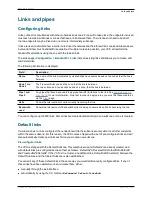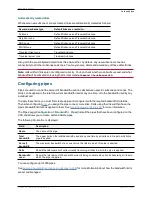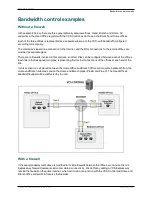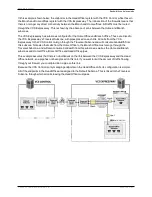
Disconnecting calls
Disconnecting a call using the web interface
To disconnect one or more existing calls using the web interface:
1. Go to the
Calls
page (
Status > Calls
).
2. If you want to confirm the details of the call, including the Call Serial Number and Call Tag, click
View
.
Click the back button on your browser to return to the
Calls
page.
3. Select the box next to the calls you want to terminate and click
Disconnect
.
Note that if your VCS is part of a cluster you have to be logged into the peer through which the call is
associated to be able to disconnect the call.
Disconnecting a call using the CLI
To disconnect an existing call using the CLI, you must first obtain either the call ID number or the call serial
number (see
Identifying calls [p.219]
). Then use either one of the following commands as appropriate:
n
xCommand DisconnectCall Call: <ID number>
n
xCommand DisconnectCall CallSerialNumber: <serial number>
While it is quicker to use the call ID number to reference the call to be disconnected, there is a risk that in the
meantime the call has already been disconnected and the call ID assigned to a new call. For this reason, the
VCS also allows you to reference the call using the longer but unique call serial number.
Note that when disconnecting a call, only the call with that Call Serial Number is disconnected. Other calls
with the same Call Tag but a different Call Serial Number may not be affected.
Limitations when disconnecting SIP calls
Call disconnection works differently for H.323 and SIP calls due to differences in the way the protocols work.
For H.323 calls, and interworked calls, the
Disconnect
command actually disconnects the call.
For SIP calls, the
Disconnect
command causes the VCS to release all resources used for the call; the call
will appear as disconnected on the VCS. However, endpoints will still consider themselves to be in the call.
SIP calls are peer-to-peer, and as the VCS is a SIP proxy it has no authority over the endpoints. Releasing
the resources on the VCS means that the next time there is any signaling from the endpoint to the VCS, the
VCS will respond with a '481 Call/Transaction Does Not Exist' causing the endpoint to clear the call.
Note that endpoints that support SIP session timers (see
RFC 4028
) have a call refresh timer which allows
them to detect a hung call (signaling lost between endpoints). The endpoints will release their resources after
the next session-timer message exchange.
Cisco VCS Administrator Guide (X8.1.1)
Page 220 of 507
Dial plan and call processing
Disconnecting calls
















































